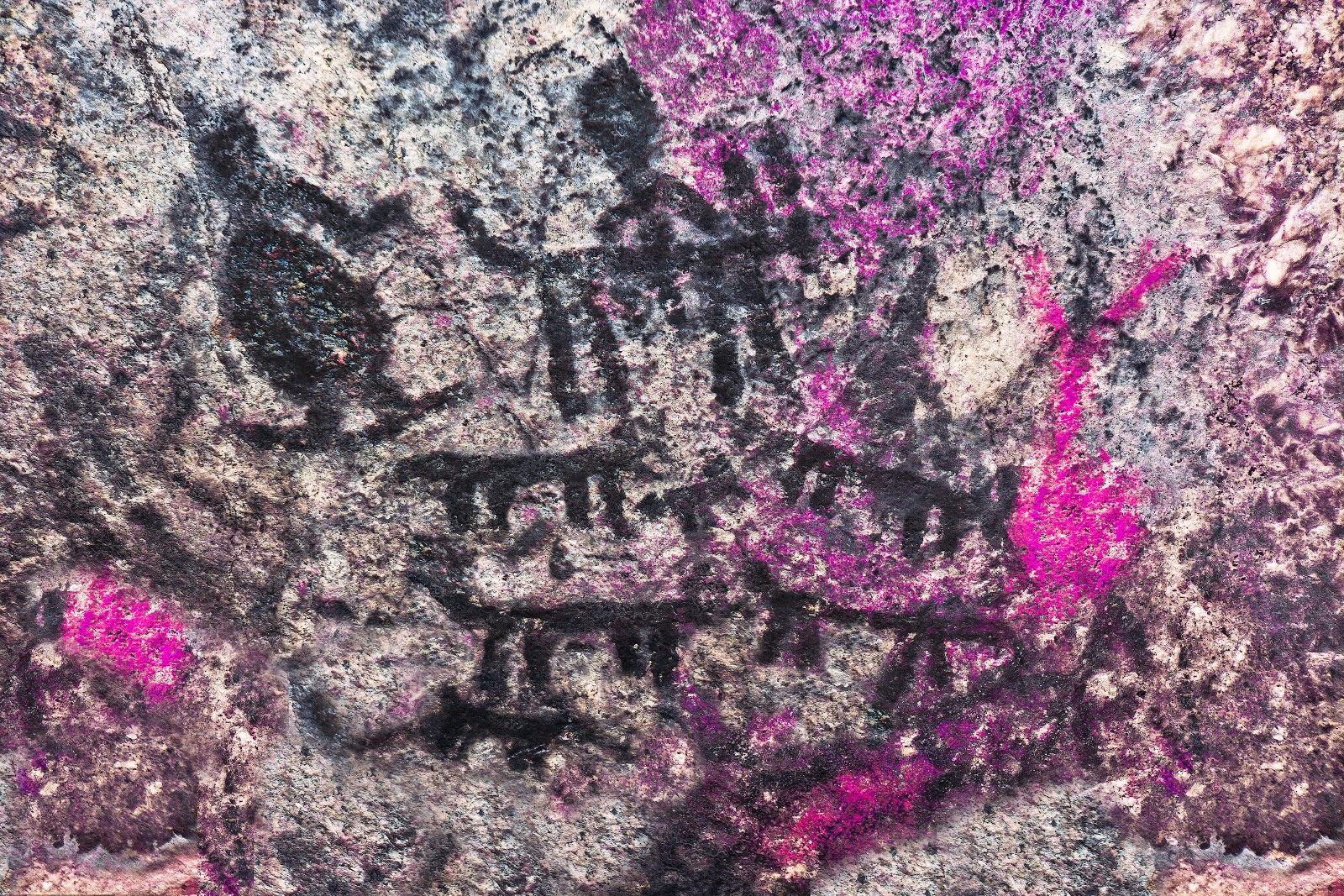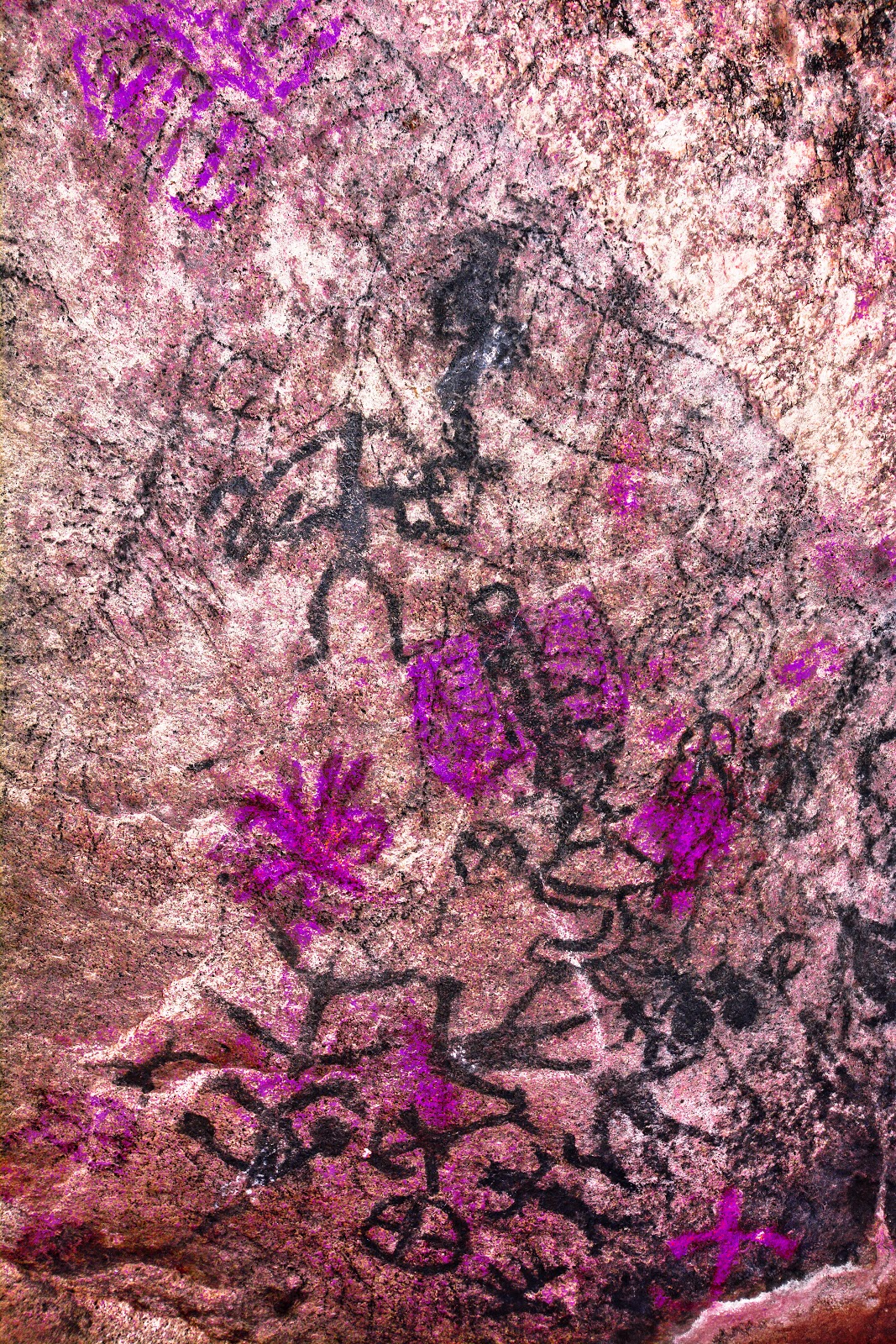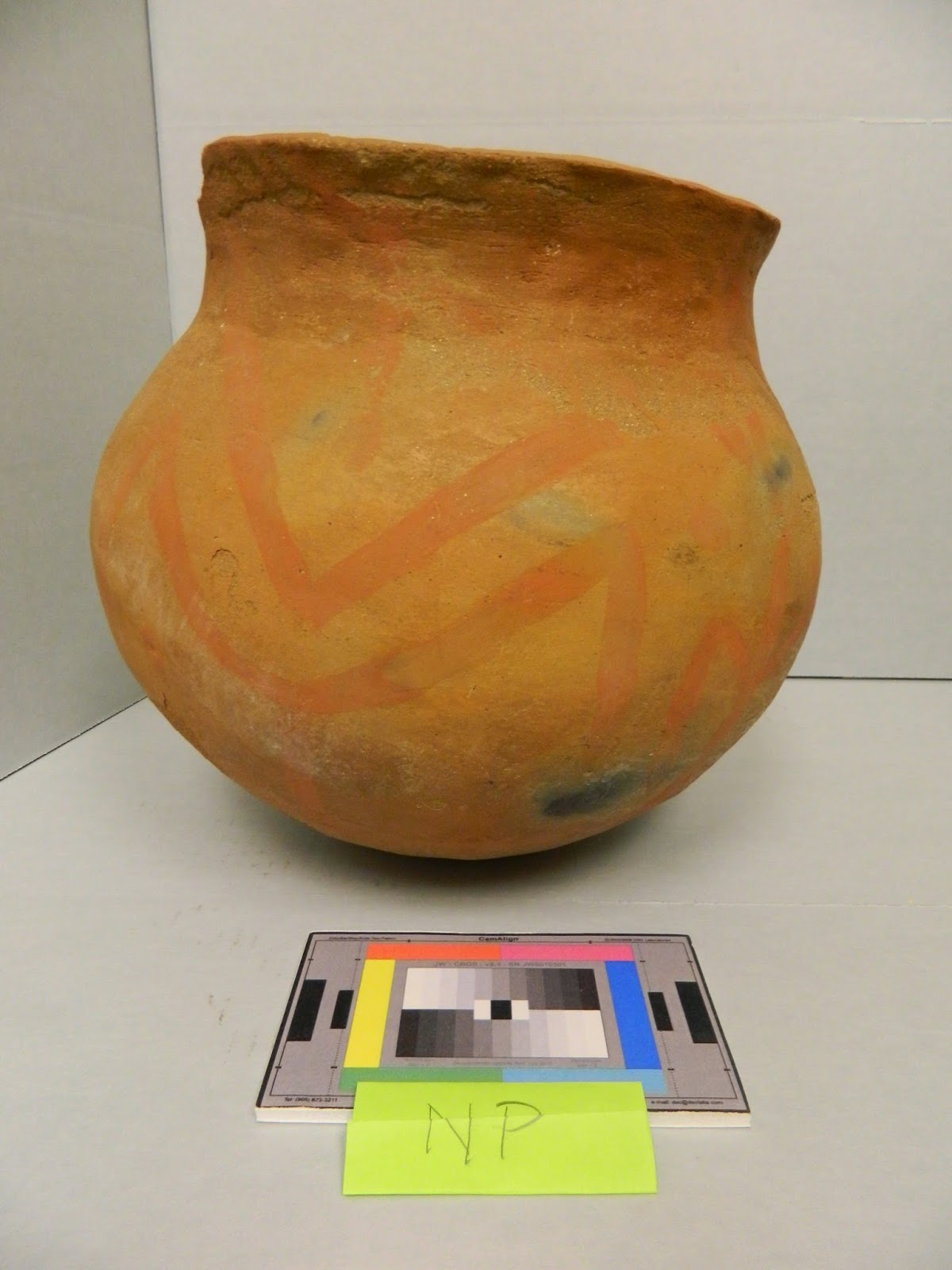As a group of El Centro BLM site stewards and SDRAA members continue to walk the deserts and mountains of East San Diego and Imperial Counties, we continue to be amazed by the diversity of Tipay/Kumeyaay rock art that we are finding. While this panel was discovered many years ago while on a simple walk, it has not been seen since and is unregistered. No photographs of this panel existed until a few days ago. This flash photograph belies the darkness of the shelter. You have to crawl in on your back and then try to sit up to see the yellow art. The space is very tight, making focusing a problem. The original discoverer called this picture a "Yellow Fish" and it's hard to argue with what appear to be rib bones. The round head is not compatible, so we are left with yet one more mystery that literal interpretations of La Rumorosa style rock art are fraught with limitations. I had one Tipai friend look at the photograph below and he responded immediately - its a desert centipede! Thanks, Frank, I had completely forgotten they existed. Frank is more in touch with the land, obviously.
Most art panels probably have spiritual meanings which were known to the artist and, perhaps, to their contemporaries. It is not known outside of Tipai culture if anyone alive today understands the meaning of these paintings. From what little we do know, the artist was having a spiritual connection during or before executing the painting, something we can all aspire to. Perhaps it is this sacredness that we all seek - to live in harmony with the spiritual world. From what Tipai friends have told me, at least in the past, there was the unifying principle of the world, that all things possessed a spiritual nature. In other words, all things were sacred.
This principle of animism has been discussed by many investigators in the literature including Polly Schaafsma [AIRA Volume 21 #3] and, more recently, by Doug Peacock. According to Peacock, in his recent text, In the Shadow of the Sabertooth, our dichotomy of a spiritual and physical world has allowed the Europeans/White Americas to propagate all kinds of rapacious behavior. As whites, we have mostly tried to dominate the world and it's peoples and change everything to be compatible with our world vision. We did not live in acceptance and harmony with nature. Rarely, does the power structure of mankind behave or act on spiritual principles. Clearly this strategy has had it's temporal advantages.
We Westerners have been in the Americas for 500 years. The Native Americans lived alongside nature for closer to 15,000 years [accepting a pre-Clovis culture]. We had/have lessons to learn from these people, but we did not listen. Now, many scientists believe it is too late to stop the inevitable climate cycle change that has already been set in play. It has happened many times before, in just blinks of past geologic time. It opened and closed the door to the Americas only thousands of years ago. If it is too late, maybe next time, the survivors will get it right?
Photograph copyright Don Liponi 2014 - see you on the trail. Click on photograph to enlarge.




























































